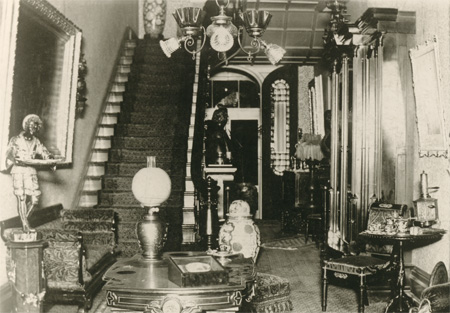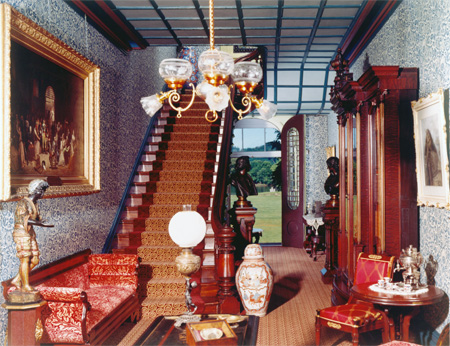
Historic Furnishing Plans
Furnishing plans are a particular specialty of LCA Associates. A furnishings plan is much more than a room–by–room schedule of decorative arts arrangement. It is the product of a detailed examination and interpretation of the documentation (photographs, diary accounts, newspaper articles, etc) and an examination and interpretation of surviving physical evidence (micro–analysis of painted surfaces, identification of wallpaper fragments, upholstery textiles, floor coverings, window treatments, and building technology such as lighting, heating, kitchens, and plumbing). The documentation and the physical evidence are collated into a room–by–room report as the basis for an authentic recreation of how that space was used, decorated and furnished at the pre–determined date in the past which is to be used as the date of interpretation.
Where documentary or physical evidence is fragmentary, LCA Associates is able to make recommendations based on common practice for the period using documents appropriate to the geographical location as well as the ethnic, economic or social class of the builders or occupants of the date selected for interpretation. The report also identifies original documents––wallpapers, textiles, floor coverings, lighting fixtures, kitchen and bathroom fittings, for example––that might be reproduced or acquired to recreate the interior to the target date.
Entry and Stair Hall, Villa Louis, Prairie du Chien, Wisconsin. This black and white photograph taken in the 1890s, together with surviving fragments of wallpaper, textiles and much of the original fine and decorative arts––together with micro–analysis of painted surfaces––guided LCA Associate’s recreation of this space.
Entry and Stair Hall, Villa Louis, Prairie du Chien, Wisconsin. Based on both documents and physical examination, the woodwork was regrained, the ceiling moldings repainted in blue over pale blue hand made paper recreated in a Canadian mill to duplicate the original installed on the ceiling in 1885. The wallpaper was block printed in England. The pattern of the original red, gold, and cream Axminster carpet seen in the 1890s photograph and described in an 1886 invoice was copied in woven Wilton for the sake of durability in what is now a heavily visited museum house. The fabric on the sofa is “Acanthus” by William Morris; it was reproduced in cotton velveteen in red oxide color copying a remnant found on a chair in the client’s collection. The ceiling lighting fixture––a gasolier converted to kerosene and later to electricity––was refinished and lowered to its original height.

